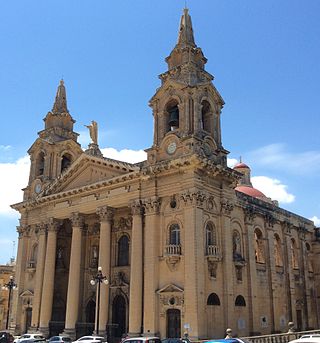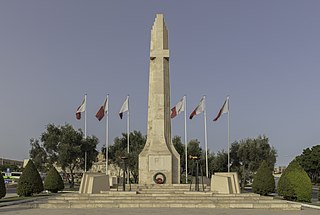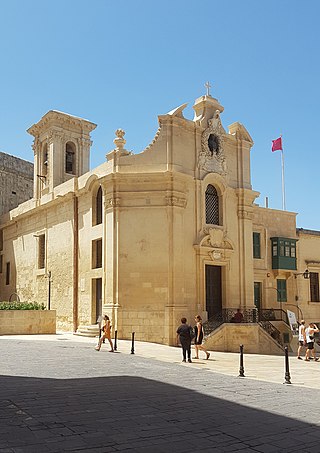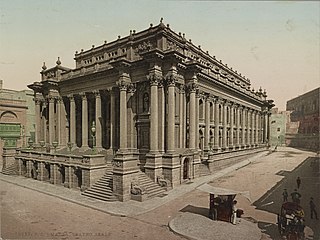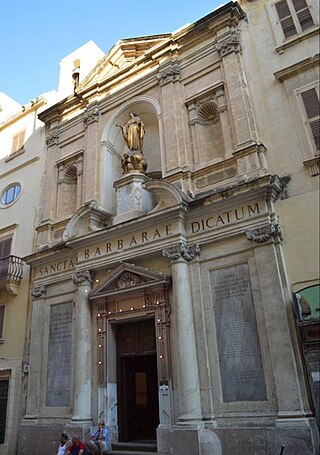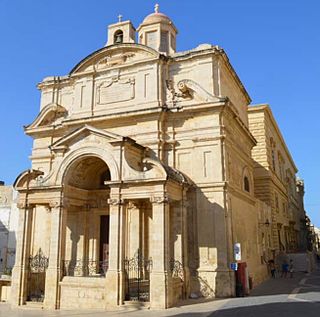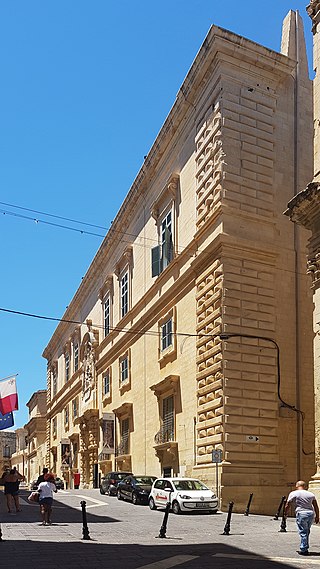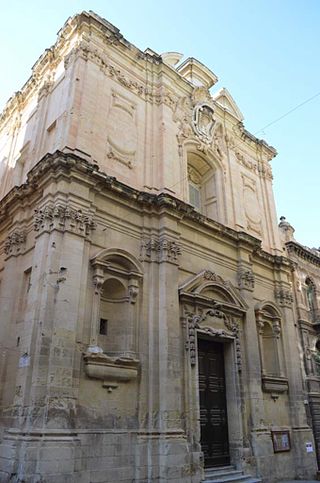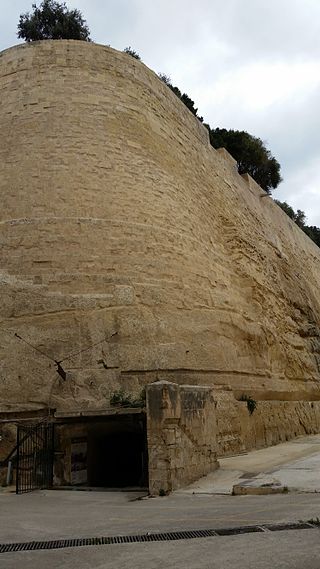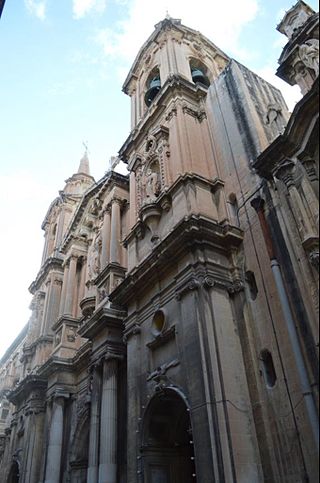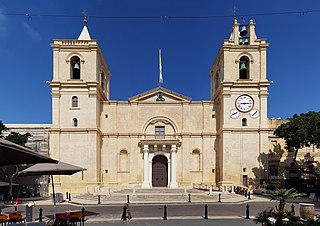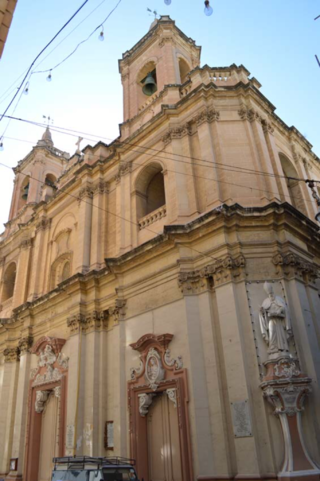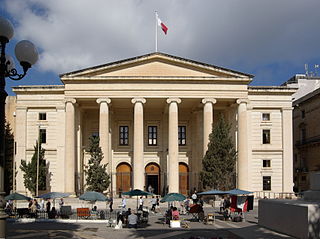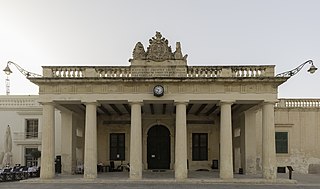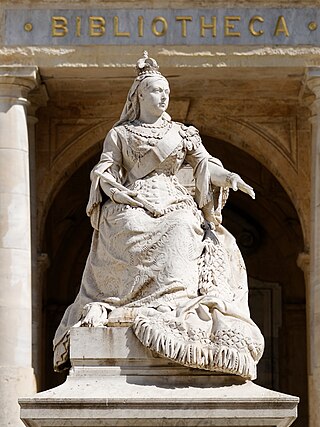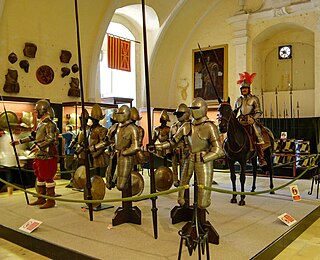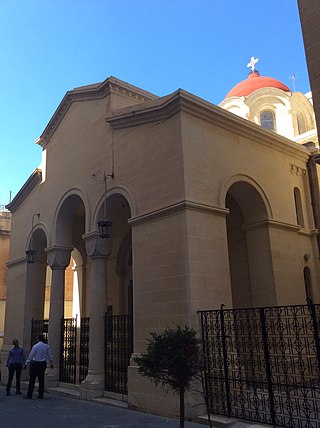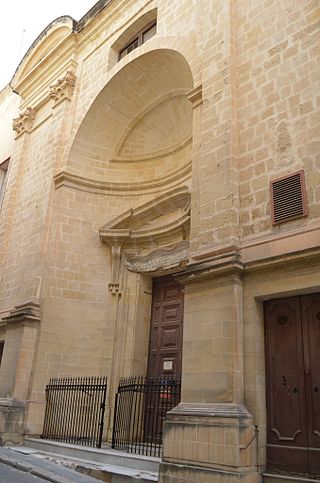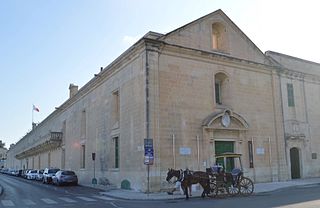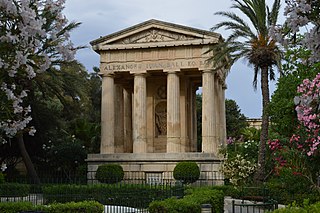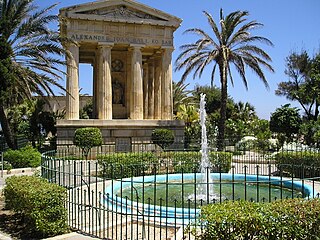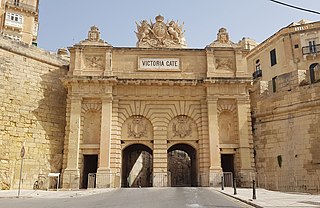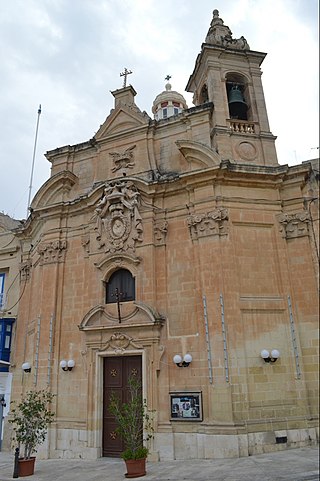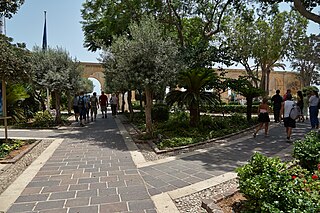Self-guided Sightseeing Tour #1 in Floriana, Malta
Legend
Tour Facts
6 km
257 m
Experience Floriana in Malta in a whole new way with our free self-guided sightseeing tour. This site not only offers you practical information and insider tips, but also a rich variety of activities and sights you shouldn't miss. Whether you love art and culture, want to explore historical sites or simply want to experience the vibrant atmosphere of a lively city - you'll find everything you need for your personal adventure here.
Individual Sights in FlorianaSight 1: Saint Publius Parish Church
The Saint Publius Parish Church, also known as the Floriana Parish Church is a Roman Catholic parish church in Floriana, Malta, dedicated to Saint Publius. It was constructed at several stages between the 18th and 20th centuries.
Sight 2: Knisja tas-Sarria
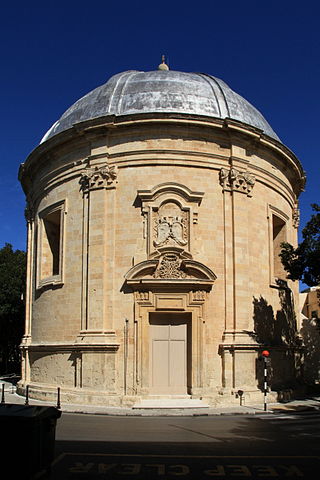
The Church of the Immaculate Conception known also as Sarria Church is a Roman Catholic Rotunda church in Floriana, Malta.
Sight 3: Lion Fountain
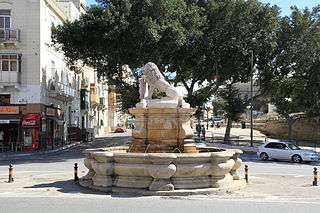
The Lion Fountain, also known as the Vilhena Fountain, is a Baroque fountain located in St Anne Square in Floriana, Malta. It was installed in 1728 by Grand Master António Manoel de Vilhena, and it was relocated a few metres from its original location in the 1950s.
Sight 4: War Memorial
The War Memorial is a memorial obelisk in Floriana, Malta, which commemorates the dead of World War I and World War II. It was inaugurated on 11 November 1938 by Governor Charles Bonham-Carter to the memory of those killed in World War I, but in 1949 it was rededicated to those killed in both world wars.
Sight 5: Our Lady of Victory Church
The Our Lady of Victory Church, formerly known as the Saint Anthony the Abbot Church, was the first church and building completed in Valletta, Malta. In 1566, following the Great Siege of Malta, Grand Master Jean Parisot de Valette and his Order showed interest to build a church in the name of the Nativity of the Virgin as a form of thanksgiving; the construction was funded by de Valette.
Sight 6: Grandmaster Jean de la Valette
Fra' Jean "Parisot" de (la) Valette was a French nobleman and 49th Grand Master of the Order of Malta, from 21 August 1557 to his death in 1568. As a Knight Hospitaller, joining the order in the Langue de Provence, he fought with distinction against the Turks at Rhodes. As Grand Master, Valette became the Order's hero and most illustrious leader, commanding the resistance against the Ottomans at the Great Siege of Malta in 1565, sometimes regarded as one of the greatest sieges of all time.
Sight 7: Royal Opera House
The Royal Opera House, also known as the Royal Theatre, was an opera house and performing arts venue in Valletta, Malta. It was designed by the English architect Edward Middleton Barry and was erected in 1866. In 1873 its interior was extensively damaged by fire but was eventually restored by 1877. The theatre received a direct hit from aerial bombing in 1942 during World War II. Prior to its destruction, it was one of the most beautiful and iconic buildings in Valletta. After several abandoned plans to rebuild the theatre, the ruins were redesigned by the Italian architect Renzo Piano and in 2013 it once again started functioning as a performance venue, called Pjazza Teatru Rjal.
Sight 8: Church of Saint Barbara
The Church of St Barbara is a Roman Catholic church situated in Valletta, Malta. The church was built to service the spiritual needs of the knights of Provence.
Sight 9: Church of Saint Francis
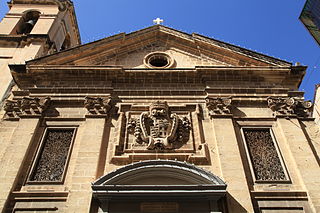
St Francis of Assisi Church, dedicated to St Francis of Assisi, in Valletta, was built in 1598 and was completed by 1607.
Sight 10: National Museum of Archaeology
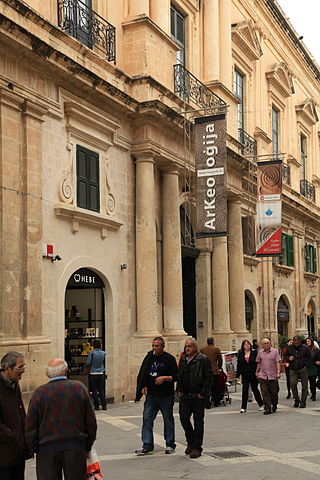
The National Museum of Archaeology is a Maltese museum in Valletta, with artefacts from prehistory, Phoenician times and a notable numismatic collection. It is managed by Heritage Malta.
Wikipedia: National Museum of Archaeology, Malta (EN), Website
Sight 11: Church of Saint Catherine of Alexandria
Sight 12: Auberge d'Italie
The Auberge d'Italie is an auberge in Valletta, Malta. It was built in various stages in the late 16th century to house knights of the Order of Saint John from the langue of Italy, and it originally had a Mannerist design by Girolamo Cassar and several other architects. The building continued to be modified throughout the course of the 17th century, with the last major renovation being carried out in the 1680s during the magistracy of Gregorio Carafa, giving the building a Baroque character.
Sight 13: Church of Saint James
The Church of St James is a Roman Catholic church in Valletta, Malta. A previous Mannerist church was built on site in the early 17th century and demolished in the early 18th century to build the present baroque church. Built on the designs of Romano Carrapecchia, the church served for religious service to the Langue of Castille. It remain an active church, found in Merchants Street, and it is a scheduled cultural building in a World Heritage Site. The church has a number of artistic features, including its imposing façade and paintings, one drawn by Filippo Paladini and another dating back than the present church itself. Nowadays the church is also used for services by the Ethiopian Orthodox Tewahedo Church and the Eritrean Orthodox Tewahedo Church.
Sight 14: Lascaris War Rooms
The Lascaris War Rooms are an underground complex of tunnels and chambers in Valletta, Malta that housed the War Headquarters from where the defence of the island was conducted during the Second World War. The rooms were later used by NATO and are now open to the public as a museum.
Sight 15: Saluting Battery
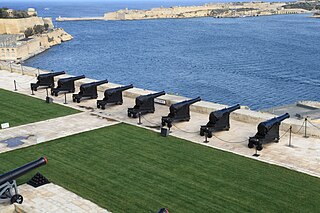
The Saluting Battery is an artillery battery in Valletta, Malta. It was constructed in the 16th century by the Order of Saint John, on or near the site of an Ottoman battery from the Great Siege of Malta. The battery forms the lower tier of St. Peter & Paul Bastion of the Valletta Land Front, located below the Upper Barrakka Gardens and overlooking Fort St. Angelo and the rest of the Grand Harbour.
Sight 16: Saint Paul's Shipwreck
The Collegiate Parish Church of St Paul's Shipwreck, also known as simply the Church of St Paul's Shipwreck, is a Roman Catholic parish church in Valletta, Malta. It is one of Valletta's oldest churches.
Wikipedia: Collegiate Parish Church of St Paul's Shipwreck (EN)
Sight 17: Saint John's Co-Cathedral
St John's Co-Cathedral is a Catholic co-cathedral in Valletta, Malta, dedicated to Saint John the Baptist. It was built by the Order of St. John between 1573 and 1578, having been commissioned by Grand Master Jean de la Cassière as the Conventual Church of Saint John.
Sight 18: Church of Saint Augustine
St Augustine Church is one of the churches built during the creation of the new city of Valletta, Malta.
Sight 19: Malta Law Courts
The Courts of Justice building is a courthouse located in Republic Street, Valletta, Malta. It was built in the neoclassical style between 1965 and 1971 on the site of Auberge d'Auvergne, which had been destroyed by aerial bombardment during World War II.
Sight 20: Main Guard
The Main Guard, originally called the Guardia della Piazza, is a building in Valletta, Malta, located in the square facing the Grandmaster's Palace in the city centre. It was originally built as a guardhouse in 1603 by the Order of St. John, and it remained in use after the British took over Malta in 1800. A Neoclassical portico was added in 1814, and a British coat of arms and a commemorative inscription were installed later on above the portico. These have become one of the main symbols of British rule in Malta. The building used to house the Office of the Attorney General.
Sight 21: Queen Victoria
A statue of Queen Victoria stands in front of the National Library of Malta in Republic Square, Valletta, Malta. Sculpted out of marble by the Sicilian artist Giuseppe Valenti, the statue depicts the Queen sitting down and wearing a shawl of Maltese lace. It was installed in the square on 5 August 1891, replacing a bronze statue of António Manoel de Vilhena.
Sight 22: Palace Armoury
The Palace Armoury is an arms collection housed at the Grandmaster's Palace in Valletta, Malta. It was the main armoury of the Order of St. John in the 17th and 18th centuries, and as such it was the last arsenal established by a crusader military order. Although today only a part of the original armoury still survives, it is still one of the world's largest collections of arms and armour still housed in its original building. The Palace Armoury has been open to the public as a museum since 1860.
Sight 23: Greek-Catholic church Our Lady of Damascus
The Church of Our Lady of Damascus is a Greek Catholic Church in Valletta, in Malta, observing the Byzantine rite. It is also called Id-Damaxxena.
Wikipedia: Church of Our Lady of Damascus, Valletta (EN), Website
Sight 24: Knisja tal-Ġiżwiti
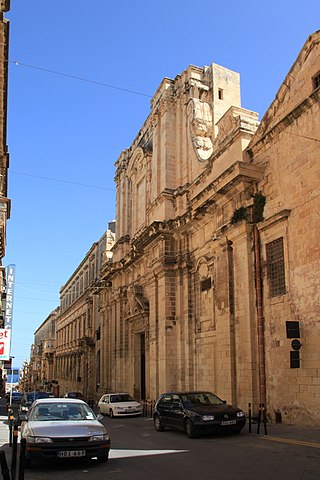
The Church of the Circumcision of Our Lord, also known as the Church of the Jesuits or the Church of the University, is one of the oldest and largest churches in Valletta, Malta. It was originally built between 1593 and 1609 by the Jesuit order, and it is located adjacent to the Old University Building, which originally housed a Jesuit college known as the Collegium Melitense. The church was rebuilt in the Baroque style by Francesco Buonamici after suffering extensive damage in an explosion in 1634. The church remained in use after the Jesuits were expelled from Malta in 1768, and it is also used for Masters and Doctoral graduation ceremonies of the University of Malta, the successor to the Collegium.
Sight 25: Church of St. Roque
The Church of St Roque is a 17th-century Baroque church located in Valletta, Malta. The church is the official parish church of the Romanian Orthodox Church in Malta and is subsequently used for Orthodox Divine services. The Romanian Orthodox parish is dedicated to the Birth of John the Baptist. The church still remains officially owned by the Roman Catholic Archdiocese of Malta.
Sight 26: Sacra Infermeria & Mediterranian Conference Center
The Mediterranean Conference Centre is a conference centre in Valletta, Malta. The building was built as a hospital in the 16th century by the Order of St. John, and it was known as the Sacra Infermeria or the Holy Infirmary. It was known as the Grand Hôspital during the French occupation of Malta and during the British period was named as the Station Hospital.
Sight 27: Il-Monument ta' Sir Alexander Ball
The Monument to Sir Alexander Ball is a neoclassical monument in the Lower Barrakka Gardens in Valletta, Malta. It was built in 1810 as a memorial to Sir Alexander Ball, a British admiral who was the first Civil Commissioner of Malta. Attributed to the architect Giorgio Pullicino, the monument is in the form of an ancient Greek temple.
Sight 28: Lower Barracca Gardens
The Lower Barakka Gardens are a public garden in Valletta, Malta, twinned with the Upper Barrakka Gardens in the same city.
Sight 29: Church of St Lucy
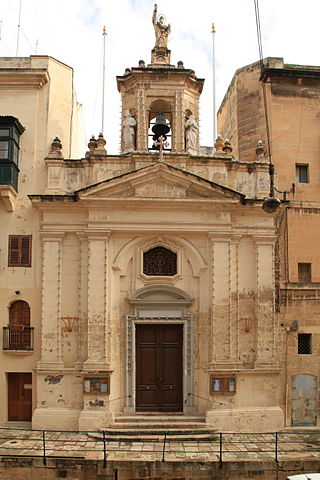
The Church of Saint Lucy is a small Roman Catholic church situated in Valletta, Malta. The church was built in 1570 and features a titular painting above the high altar and the corpse of St Lucian, the martyr.
Sight 30: Victoria Gate
Victoria Gate is a city gate in Valletta, Malta. It was built by the British in 1885, and was named after Queen Victoria. The gate is the main entrance into the city from the Grand Harbour area, which was once the busiest part of the city. The gate is located between Marina Curtain and St. Barbara Bastion, on the site of the 16th-century Del Monte Gate.
Sight 31: Church of the Madonna of Liesse
The Church of Our Lady of Liesse is a church in Valletta, Malta. The church was built in 1740 on the site of a 17th-century church. The cupola was built to the design of the Maltese architect Francesco Zammit. The church is located on the waterfront of the Grand Harbour, close to Lascaris Battery and the site of the fish market. It is especially venerated by the people of the port area.
Sight 32: Barrakka Lift
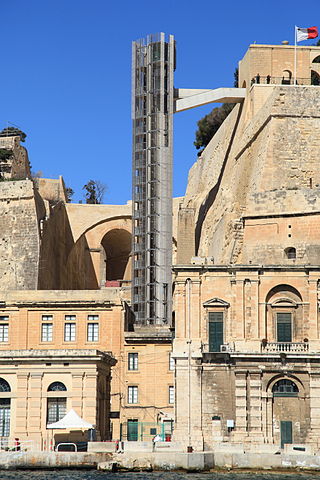
The Barrakka Lift is a lift in Valletta, Malta which was constructed in 2012, on the site of a previous lift which had operated from 1905 to 1973 and which was demolished in 1983. It is located inside the ditch of the fortifications of Valletta, and links Lascaris Wharf to St. Peter and Paul Bastion and the Upper Barrakka Gardens. It therefore allows access from the Grand Harbour to the city.
Sight 33: Upper Barrakka Gardens
The Upper Barrakka Gardens are a public garden in Valletta, Malta. Along with the Lower Barrakka Gardens in the same city, they offer a panoramic view of the Grand Harbour.
Share
How likely are you to recommend us?
Disclaimer Please be aware of your surroundings and do not enter private property. We are not liable for any damages that occur during the tours.
GPX-Download For navigation apps and GPS devices you can download the tour as a GPX file.
